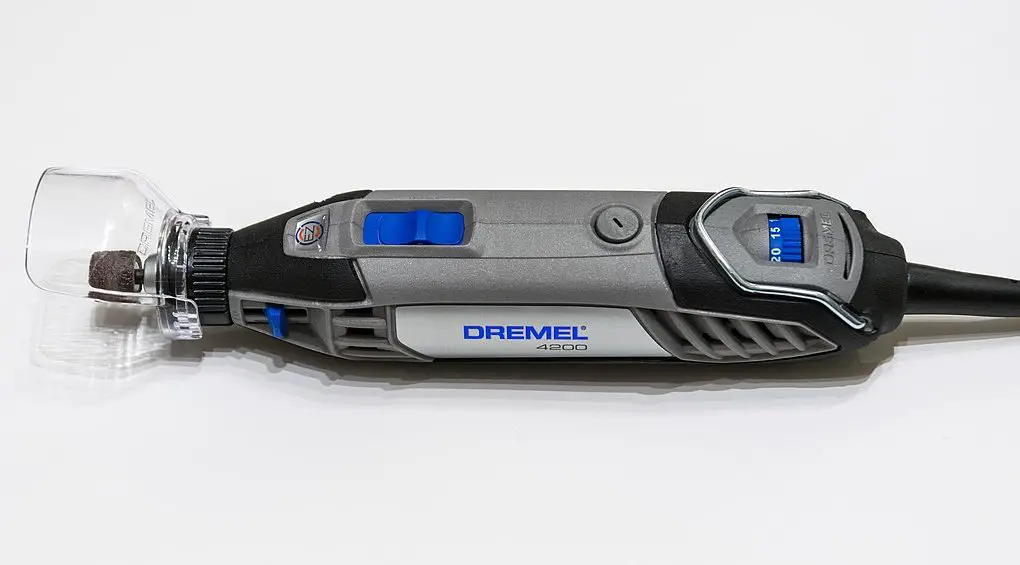Sanding glass with Dremel is a skill that’s both practical and satisfying. Whether you’re looking to smooth out rough edges, create decorative effects, or prepare surfaces for painting, this guide is here to help. Even if you’re a beginner, you’ll find that sanding glass with a Dremel tool can be an enjoyable and rewarding task. Below are clear step-by-step instructions to assist you in this endeavor.

Tsungam, CC BY-SA 4.0 https://creativecommons.org/licenses/by-sa/4.0, via Wikimedia Commons
Sanding Glass with Dremel: What You Will Need
- Dremel Rotary Tool
- Specialty Diamond Glass Sanding Bit
- Water (for cooling)
- Safety Glasses
- Gloves
Step 1: Safety Precautions
Before sanding glass with a Dremel, it’s essential to take the proper safety precautions. Wear safety glasses to protect your eyes and gloves to protect your hands from sharp glass edges.
Step 2: Choosing the Right Bit
Selecting the right sanding bit is crucial for success. A specialty diamond glass sanding bit is recommended for this task. Securely attach it to the Dremel tool.
Step 3: Preparing the Glass
Clean the glass thoroughly to remove any dirt or grease that might interfere with sanding. Mark the areas you wish to sand using a non-permanent marker.
Step 4: Sanding Process
Turn on the Dremel tool and adjust the speed to a medium setting. Gently press the bit against the glass, moving in even strokes. Frequently dip the bit in water to keep it cool and prevent cracking.
For more articles on sanding, click here: Sanding: Your Full-Circle Guide to Smooth Mastery
Step 5: Finishing Touches
Once you’ve achieved the desired finish, turn off the Dremel and wipe the glass clean. Inspect your work for uniformity and make any necessary adjustments.
Conclusion
Sanding glass with Dremel doesn’t have to be a daunting task. With the right tools and careful guidance provided here, anyone can achieve professional results. Happy sanding!